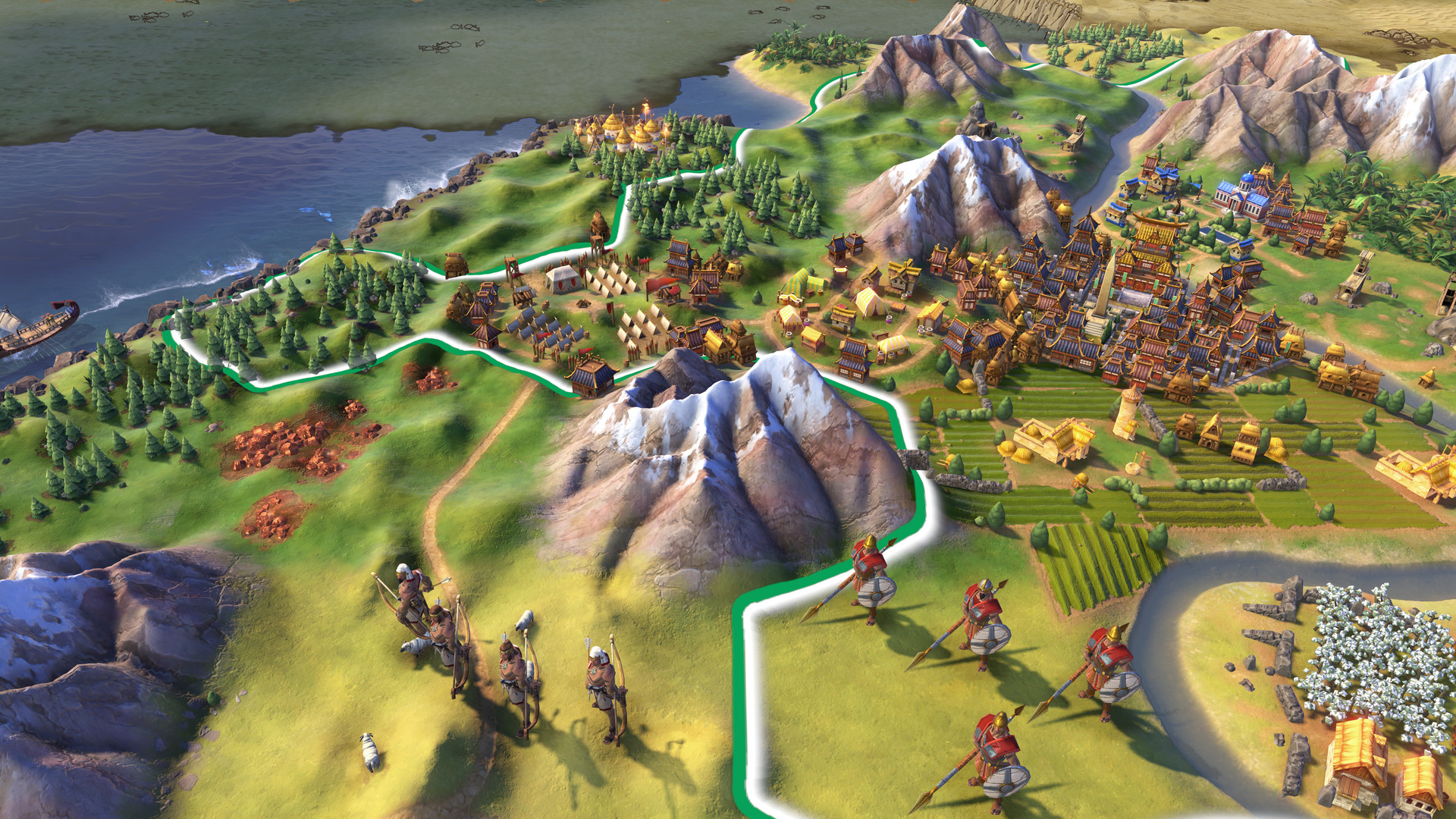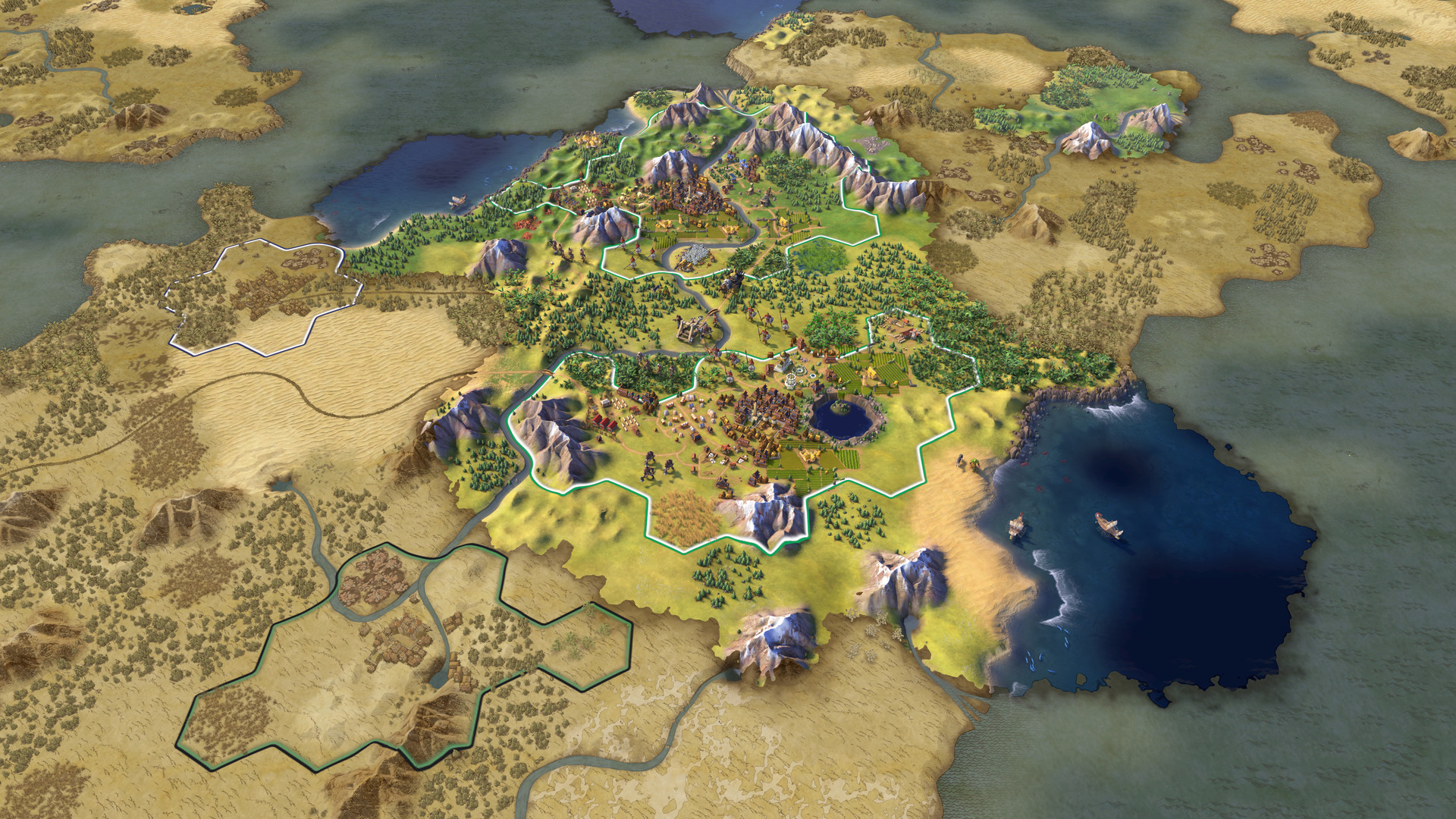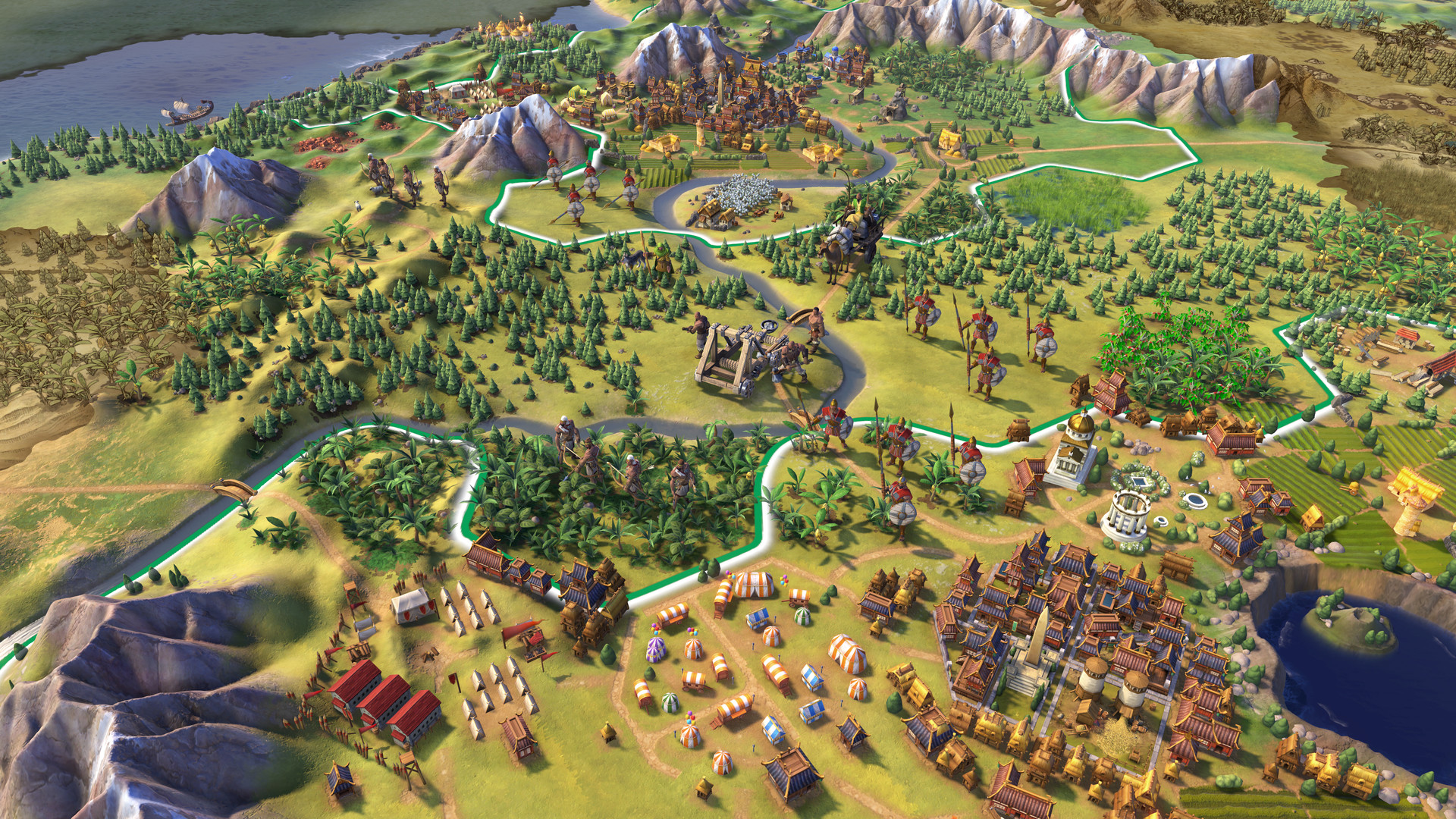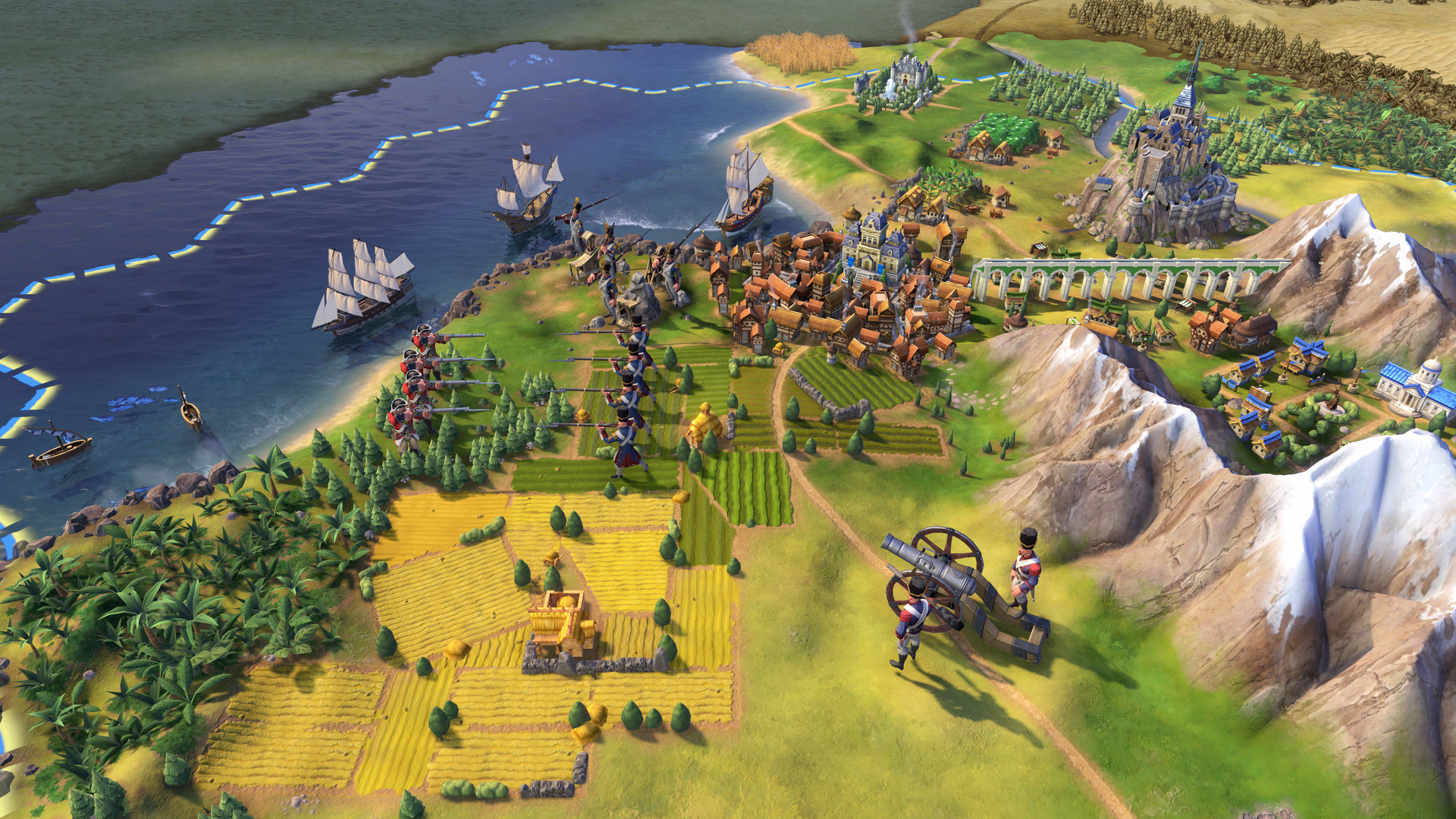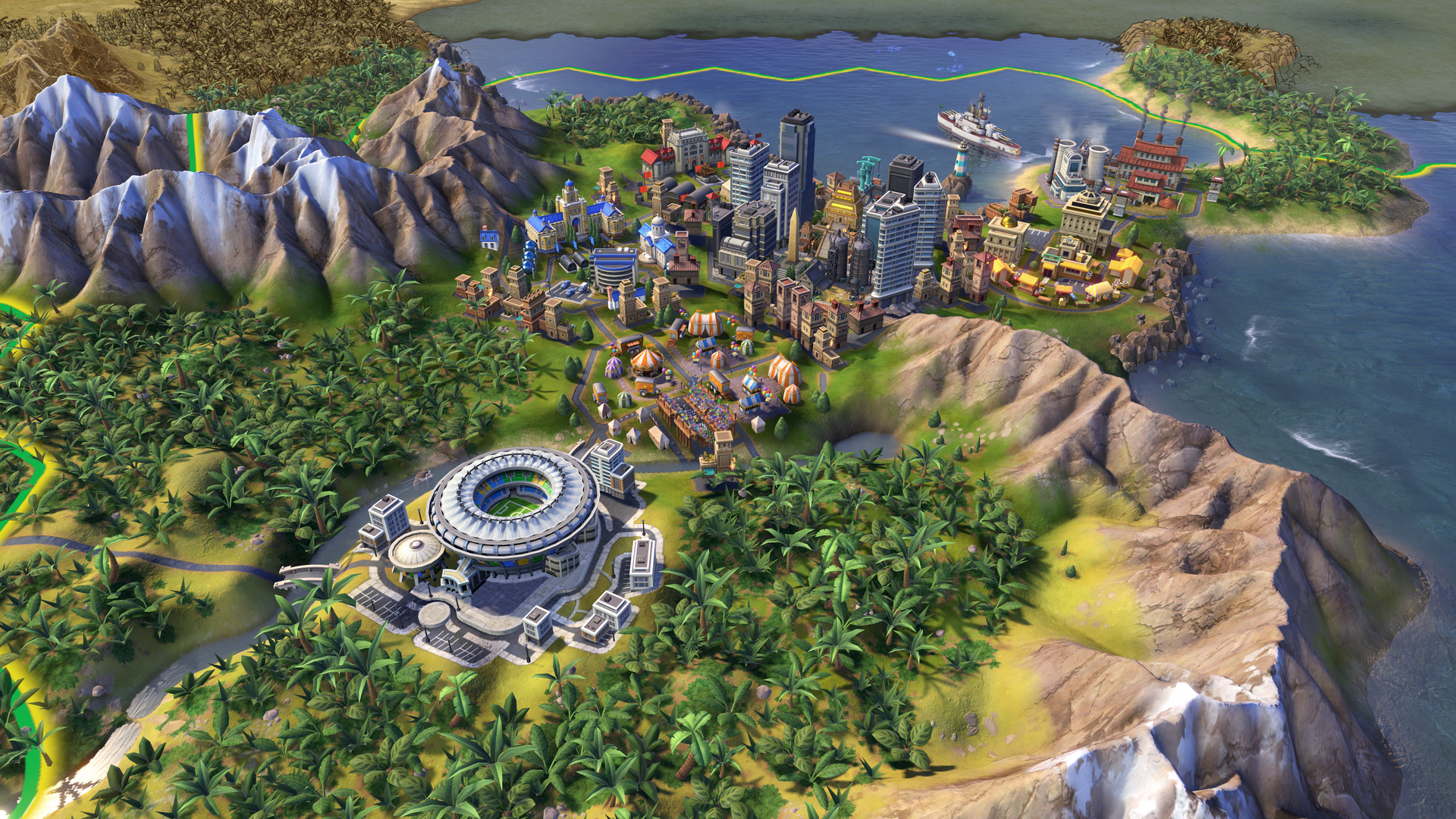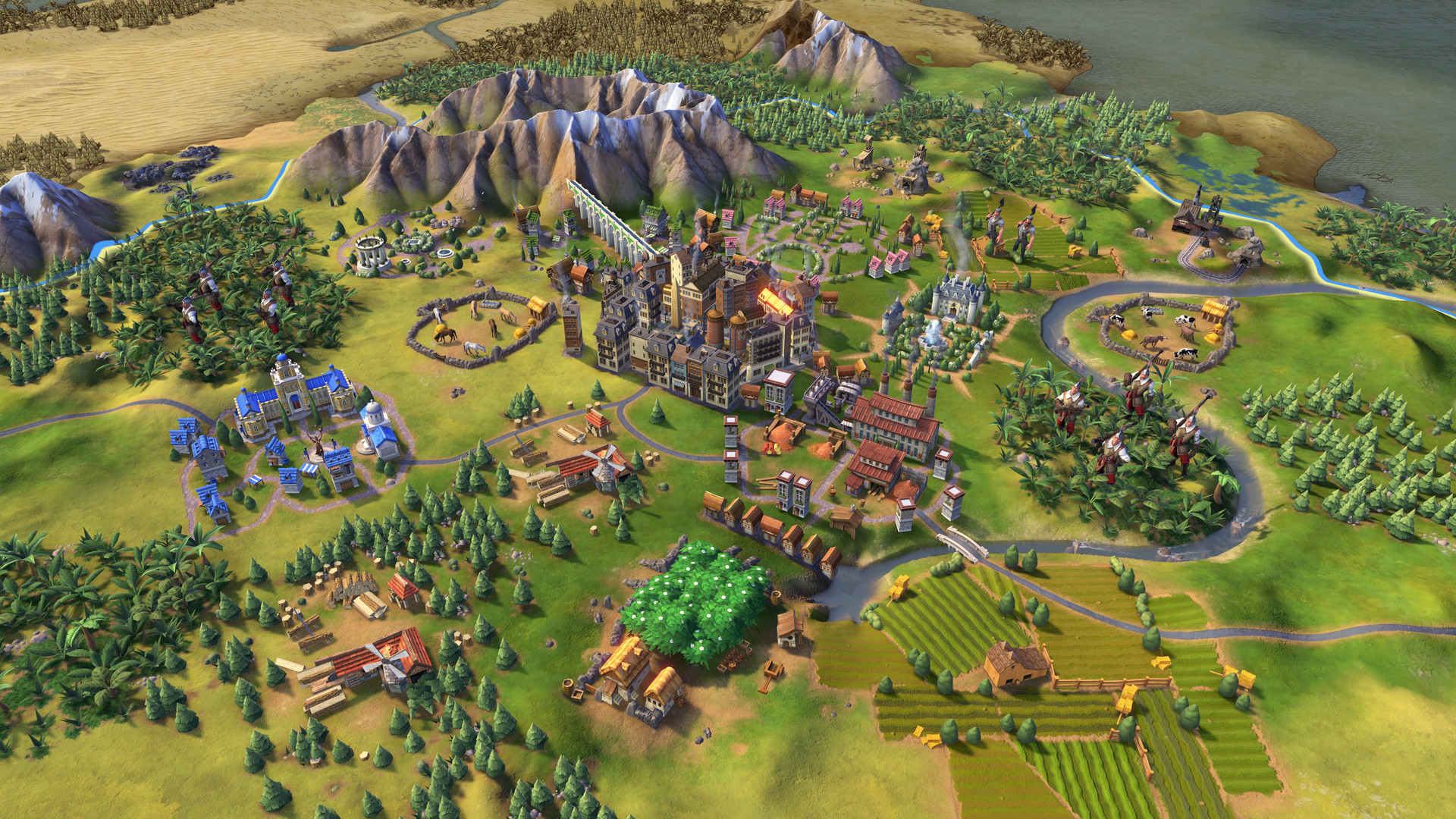Originally created by legendary game designer Sid Meier, Civilization is a turn-based strategy game in which you attempt to build an empire to stand the test of time. Become Ruler of the World by establishing and leading a civilization from the Stone Age to the Information Age. Wage war, conduct diplomacy, advance your culture, and go head-to-head with history’s greatest leaders as you attempt to build the greatest civilization the world has ever known.
Civilization VI offers new ways to engage with your world: cities now physically expand across the map, active research in technology and culture unlocks new potential, and competing leaders will pursue their own agendas based on their historical traits as you race for one of five ways to achieve victory in the game.
EXPANSIVE EMPIRES:
See the marvels of your empire spread across the map like never before. Each city spans multiple tiles so you can custom build your cities to take full advantage of the local terrain.ACTIVE RESEARCH:
Unlock boosts that speed your civilization’s progress through history. To advance more quickly, use your units to actively explore, develop your environment, and discover new cultures.DYNAMIC DIPLOMACY:
Interactions with other civilizations change over the course of the game, from primitive first interactions where conflict is a fact of life, to late game alliances and negotiations.COMBINED ARMS:
Expanding on the “one unit per tile” design, support units can now be embedded with other units, like anti-tank support with infantry, or a warrior with settlers. Similar units can also be combined to form powerful “Corps” units.ENHANCED MULTIPLAYER:
In addition to traditional multiplayer modes, cooperate and compete with your friends in a wide variety of situations all designed to be easily completed in a single session.A CIV FOR ALL PLAYERS:
Civilization VI provides veteran players new ways to build and tune their civilization for the greatest chance of success. New tutorial systems introduce new players to the underlying concepts so they can easily get started.
Steam Workshop functionality will be coming to Sid Meier’s Civilization VI in a future update.

Born among the Scottish aristocracy, Robert the Bruce is best remembered for his stalwart leadership of Scotland during the nation’s war for independence with England in the late 13th century. Robert successfully claimed the throne of Scotland and led his people to victory over the oppressive rule of England.
Although the details of his early life are uncertain, Robert was born into a line of Scottish nobility and by the time he was 18 years old, Robert was already entangled in the elaborate web of politics surrounding the rule of Scotland.
Following the death of their queen in 1290, Scotland entered an [u]interregnum[/u] or gap in governance. Edward I, King of England (known famously as Longshanks), was asked to choose her successor. When he selected John Balliol as the rightful heir in 1292 (over Robert the Bruce’s grandfather), both Robert and his father refused to accept the decision.
Rather than support the newly-crowned King John, the Bruces sided with Longshanks – the English king that chose John in the first place. This found the Bruce family at odds with many of their countryman.
Hearing of an alliance between the Scots and French in 1296, England invaded and dethroned King John – once again, leaving Scotland without a true monarch. Robert finally broke from his father's wishes and sought to align himself with those seeking to revolt. However, it wasn't until 1298 after once again siding with Longshanks at the Battle of Falkirk that Robert truly broke from the English king. After seeing his fellow countrymen defeated, including Sir William Wallace, the time had come for change. When Wallace ceded the title of Guardian of Scotland, Robert was named his successor.
Following a series of purported agreements and broken promises over the future of the Scottish throne, in 1306 Robert met with John Comyn, nephew to prior King John. Comyn was another strong claimant to the throne and potential rival to Robert. The details of their meeting are still debated to this day, but what is known for certain is that at some point the two came to blows and Comyn was killed by Robert. Less than two months later, Robert was named King of Scots by his fellow noblemen.
As King, Robert led Scotland in a prolonged conflict against England that persisted not only through the reign of Edward Longshanks but also that of his son, Edward II. For nearly eight years, Scotland and England volleyed for control of the nation, culminating in the Battle of Bannockburn in 1314. By some accounts Robert's forces were outnumbered three to one, yet through clever tactics the Scottish emerged victorious. Suffering thousands of casualties, the battle was an utter humiliation for England and King Edward. With momentum on his side, Robert now pushed back the English in their own lands as well as their territories in Ireland.
When the Pope finally recognized Robert as the true king and sole ruler of Scotland in 1324, England's claims to the country were all but over. By 1327, the Treaty of Edinburgh-Northampton officially marked the end of what eventually came to be known as the First War of Scottish Independence.
Although he lived to see his homeland free of English rule, on June 7th, 1329, Robert died at the age of 54. Despite the political conflicts that plagued the Bruce family during his formative years, Robert rose to the call of his people, finally shaking off the threat of England after more than a decade of turmoil.

UNIQUE UNIT – HIGHLANDER
The feared and respected Scottish Highlanders were ferocious on the battlefield. In fact, some scholars say that even the Vikings knew to avoid the nation. Starting in the sixteenth century, though, highlanders began trading in their bows for gunpowder firearms. By the 1700s, the Scottish highlands were in constant conflict, be it rebels, criminals or warring clans. King George I ordered the formation of what would be called “The Black Watch”, to help keep the peace. They served so well that by 1739 they were formed into His Majesty’s 42nd Regiment and shipped out to North America. Replacing the Ranger in [u]Civilization[/u] [u]VI[/u], this strong recon unit gains a Combat Strength bonus fighting on hill and forest terrain.
UNIQUE STRUCTURE – GOLF COURSE
The true origins of golf remain debated, dating back to the Chinese, Persians and Romans, but we trace the modern game of golf to 15th-century Scotland. One of the earliest written records comes from James II's Act of Parliament of 6 March 1457 , which banned golf and football. The reason: It was an unwelcome distraction to learning archery at a time when military training was compulsory for males over 12.This once-banned pastime provides a number of bonuses for Scotland in [u]Civilization VI[/u]. A Golf Course provides additional Amenity, Gold and Culture if placed adjacent to a City Center. It also provides additional Culture when located near an Entertainment Complex. Later in the game, it yields additional Tourism and Housing bonuses. Golf Course tiles can’t be swapped or placed in the Desert and Desert Hills.
UNIQUE LEADER ABILITY – BANNOCKBURN
The Battle of Bannockburn was a turning point in the Scot’s fight for independence from England. Estimates vary, but the English force – at least 50% larger than what the Bruce army was able to muster – suffered huge casualties. As a result, Scottish led raids into English territories. This translates into some war bonuses for the Scottish. Robert the Bruce can declare a War of Liberation after gaining the Defensive Tactics Civic. You also gain bonus Production and additional movement during a War of Liberation.UNIQUE CIV ABILITY – SCOTTISH ENLIGHTENMENT
The 18th and 19th century marked a period of great scientific and intellectual achievements for the Scottish people. Discoveries in the sciences, math, literature – to Adam Smith’s “The Wealth of Nations,” which became the foundational economic theory that had immediate impacts for England back then and the modern world, today. Happy Cities receive additional Science and Production. They also generate a Great Scientist point per campus and a Great Engineer point per Industrial Zone.https://www.youtube.com/watch?v=1Yq-CCO2yJY
SUBSCRIBE ➜ HTTP://2KGAM.ES/CIVILIZATIONYT
Robert the Bruce is one of the nine new leaders coming with [u]Civilization VI: Rise and Fall[/u] when the expansion releases on February 8, 2018.
Follow the conversation on social media by using the hashtag #OneMoreTurn, and be sure to follow the [u]Civilization[/u] franchise on social media to keep up to date with the latest news and information on [u]Sid Meier’s Civilization VI[/u].
Social Links:
https://www.facebook.com/civ/
https://twitter.com/civgame
https://www.instagram.com/civgame/
http://2kgam.es/CivilizationYT
http://steamcommunity.com/app/289070
Minimum Setup
- OS: Ubuntu 16.04 (64bit)
- Processor: Intel Core i3 530 or AMD A8-3870Memory: 6 GB RAM
- Memory: 6 GB RAM
- Graphics: 1 GB VRAM Minimum - NVIDIA GeForce 650
- Storage: 17 GB available spaceAdditional Notes: IMPORTANT NOTICE: Some Intel i3 Processors may require an additional 2 GB Swap Partition. IMPORTANT NOTICE: ATI and INTEL chipsets are NOT supported to run Civilization VI LINUX. Don't meet the above requirements? Running on a unique distro? That doesn't mean your configuration wont run Civ VI! Visit the Civilization VI community page to share your experience with other Linux players and learn about how to send bugs to Aspyr. Your feedback will help us improve Civ VI Linux and future AAA Linux releases!
[ 6494 ]
[ 2513 ]
[ 1962 ]

